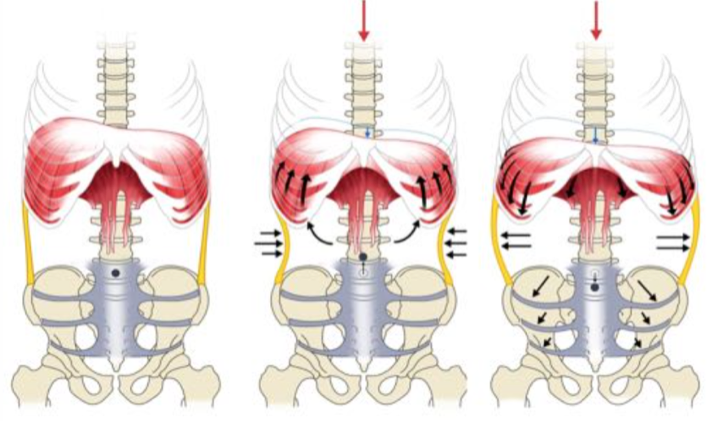DNS
Dynamic Neuromuscular Stabilization
Developmental Positions

Developmental positions and global muscle patterns are the basic buildings blocks of movement.
Like a blueprint for ideal movement in your brain.

If you look at the 3 examples above you will see an example of a "tension strategy" ( also referred to as bracing) in the middle. This strategy of stabilizing will always plateau in results.
Optimal core integration is the last example, a "pressure strategy" . This strategy integrates the diaphragm and creates Intra-abdominal pressure. Stability from the INSIDE- OUT, not the OUTSIDE - IN.

The first example shows optimal integration of core muscles (diaphragm over pelvic floor) creating intra-abdominal pressure. The other 3 examples are of non-optimal coordination of core muscles all resulting in loss of IAP and use of an extension compression stabilization strategy (ECSS).

Example of an extension compression stabilization strategy (ECSS) and poorly regulated intra-abdominal pressure.
The most important muscle in your body
The Diaphragm

Arguably THE MOST IMPORTANT muscle in your body.
The diaphragm has 3 functions - breathing, posture ( core) and a sphincter. Research has shown that the diaphragm is what starts intra-abdominal pressure and core coordination. The diaphragm is your primary muscle of respiration. If breathing isn't normalized no other movement can be. The diaphragm is dome shaped like a parachute and made up of 2 hemi-diaphragms - right and left. Interestingly, the right is larger, thicker and stronger than the left. The right also has more crural fibres (spinal attachments ) which descend further than the left. The right has better abdominal apposition and drives breathing better than the left.
Add your email to the mailing list to get the latest updates.

